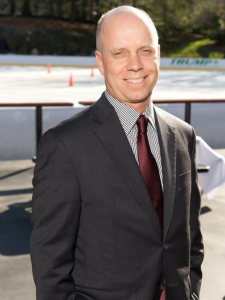Brain tumors grow inside your head within your brain. Knots on the outside (on your head) are not brain tumors, they have to do with the skull bone, scalp muscles or skin. An actual brain tumor will not change the outward shape of your skull. Your skull is a hard, bony container for your brain.
If you had a brain tumor, it would just be squishing the soft tissue of the brain, but it wouldn’t be able to change the actual shape of the skull. An actual brain tumor will not change the outward shape of your skull. A big bump, may be a ruptured blood vessel inside the skull causing a build up of blood putting pressure on the brain.
The study involving scientists at The Institute of Cancer Research in London, along with colleagues in Europe and the US, aimed to find sequence changes in DNA among these people passed on from their parents that increase risk of the disease. Researchers carried out two new genome-wide studies and combined the results with six previous studies in a ‘meta-analysis’ – involving in total 12,496 cases of glioma and 18,190 people without.
They detected 13 previously undiscovered genetic changes that increased the risk of glioma.These were found to affect a variety of cell functions, including nerve cell division, DNA repair, cell cycle control, protein production and inflammation.
11-year-old girl’s brain tumor disappears in medical mystery.
By Dr. Tara Narula CBS News December 18, 2018, 6:46 P.M.
When 11-year-old Roxli Doss was diagnosed with what appeared to be a rare, inoperable brain tumor in June, she faced it with courage. Each year, some 300 children in the U.S. are diagnosed with this particular brain tumor, also known as a diffuse intrinsic pontine glioma, or DIPG. There is no cure, and less than 1 percent of all people who develop one survive beyond five years. “It’s a devastating disease.
You have decreased ability to swallow, sometimes vision loss, decreased ability to talk. Eventually difficulty with breathing,” said Dr. Virginia Harrod, Roxli’s doctor at Dell Children’s Medical Center in Austin. Roxli was given months to live. She went through weeks of radiation, her parents Scott and Gena Doss prayed for a miracle. “We got it,” Gena said. “Praise God, we did,” Scott added. Typically, radiation is a life-extending treatment and not a cure. But just over two months after being diagnosed, the tumor appeared to have completely gone away.
Doctors can’t explain the remarkable response.
“It was actually unbelievable. The tumor is undetectable on an MRI scan, which is very unusual,” Dr. Harrod said. Doctors acknowledge the tumor may return, but for now Roxli is just as active as she ever was. For the Doss family, Christmas came a little early this year.
Diffuse Intrinsic Pontine Glioma (DIPG)
DIPG is the worst form of brain cancer in that it is inoperable and the median survival rate from diagnosis is 9 months. A Diffuse Intrinsic Pontine Glioma (DIPG) is a tumor located in the pons (middle) of the brain stem. The brain stem is the bottom most portion of the brain, connecting the cerebrum with the spinal cord.
The majority of brain stem tumors occur in the pons (middle brain stem), are diffusely infiltrating (they grow amidst the nerves), and therefore also are not able to be surgically removed. Glioma is a general name for any tumor that arises from the supportive tissue called glia, which help keep the neurons (“thinking cells”) in place and functioning well.
A brainstem glioma is a cancerous glioma tumor in the brainstem. The brain stem contains all of the “wires” converging from the brain to the spinal cord as well as important structures involved in eye movements, face and throat muscle control and sensation.
THE Numbers: Brain tumors are the leading cause of death from childhood cancer.
We estimate that approximately 300 children are diagnosed each year in the US with DIPG (interpolating this to the world population will lead to a few thousand globally).
Over 90% die within 12 months, 97% within three years.
Usually diagnosed in children from ages 5 to 10.
Diffuse Intrinsic Pontine Gliomas account for about 10 out of every 100 brain tumors in children but constitutes about 80% of deaths resulting from brain tumors.
DIPG Causes and DIPG Symptoms
We don’t know what causes a diffuse pontine glioma. There is no way to predict that a child will get brain cancer. Some DIPG symptoms are muscle weakness on one side of the body, swallowing problems, speech problems, crossed eyes, drowsiness, hearing loss, and personality changes. The brainstem has cranial nerves. . . that control many of these functions. The tumors affect these nerves and cause symptoms.
Treatments
Diffuse Intrinsic Pontine Gliomas are difficult to treat because the tumor cells grow in between and around normal cells. It is impossible to remove a tumor in this area because it interferes with the functioning of this critical area of the brain. Radiation (30 sessions done under general Anesthesia) is the only proven treatment for DIPG and produces a temporary improvement in symptoms (average of 3 months) which eventually reappear and develop at a much faster, more aggressive pace.
While the search for a cure continues, children with DIPG must endure one experimental trial after another, usually suffering terrible side-effects. Ultimately, it is with enormous cruelty that this disease takes its final toll. DIPG spares children of their cognitive abilities, allowing them to remain fully aware of their decline, while robbing them. . . of their motor functions resulting in partial paralysis, loss of voice, sight and finally their ability to eat and breath.
Justin Rackley, known as Lakeforkguy in the fishing world, creates fishing and outdoor videos on youtube and other social platforms. LFG provides fishing tips and techniques for mostly largemouth bass fisheries but also travels to other freshwater and saltwater fishing spots to explore new fish species and fishing techniques to help you catch more fish.
Lakeforkguy likes to hang out on any fishing vessel or go bank fishing with his other YouTube Fishing friends and vlog with his Wife Stephanie AKA Ocean Spoon Girl and French bulldog Winston. Since having brain surgery, I explain how it’s changed my life and what to expect next with treating the tumor. Thank you again for your continued support and uplifting messages. My heart goes out to everyone with brain tumors and all other neurological conditions, I wish we knew more about the brain.
One British man from Wirral, Merseyside, has defied conventional medicine and beaten his cancer. After being diagnosed with a Glioblastoma Multiform 4 brain tumor in July of 2015, Dave Bolton took matters into his own hands. The father-of-two and former police officer claims that ditching carbohydrates and sugar in favor of protein and fat saved his life. A Glioblastoma Multiform 4 (GBM4) brain tumor is often called “The Terminator” by doctors because of its low survival rates. Bolton was given a year to live after his diagnosis. However, after transforming his diet, his tumor began to shrink. This year, doctors say there is almost nothing left of the cancerous mass.
Bolton decided to eliminate all carbohydrates, sugar and most fruits and vegetables from his diet. Instead, he filled up on more meat, dairy and fat. His game plan to fight cancer is based on the principles of a ketogenic diet. Many people believe that following such a diet can help to fight cancer by cutting off the tumor’s primary energy source: sugar. Of course, many mainstream medicine practitioners do not agree with the diet, and insist that there is no evidence to support such a claim.
Mom stuns doctors by beating her deadly brain cancer. In her case, the pathology was “not controversial,” according to her surgeon, Dr. Robert Spetzler, director of the Barrow Neurological Institute at Joseph’s Hospital and Medical Center in Phoenix. In his 35 years as a neurosurgeon in the United States, Dr. Spetzler said he has never seen such a triumph against a stage 4 glioblastoma.
Also, Cheryl Broyles was diagnosed with the Glioblastoma Multiforme brain tumor in 2000. She has survived the GBM 18 years. Presently, Cheryl is still alive and loving life! During that time she has been through 4 brain tumor recurrences and 5 brain surgeries. This video Published on Apr 7, 2013 is encouraging. . . following Cheryl through her 5th brain surgery and recovery. Giving everyone HOPE that brain surgery is not as scary as most may fear. It takes time and patients recovering, your brain can work again after a craniotomy! Cheryl’s web page is also inspiring and informative for others battling brain tumors and fighting cancer.
Yet another Famous Brain Cancer Survivor is President Jimmy Carter who credits the new cancer drug Keytruda. . . . for shrinking his brain tumors completely. It’s one more possible victory for the newest class of cancer drugs that empowers the immune system to fight off tumors. What about the future of stem cell research?
Two Other Doctors to Research Who Are Leaps Ahead of the Pact!!!
1/2 this is one of my more incredible research items. I have found in 12 1/2+ years of research and Hrayr Shahinian, M.D. is amazing in Los Angeles. Hrayr Shahinian, M.D. of the Skull Base Institute in Los Angeles, California discusses with Dr. Travis Stork and Dr. Andrew Ordon the revolutionary minimally-invasive brain surgery he performed to remove a life-threatening brain tumor on 14-year old Christa Hvidsten.
2/2 University of Oklahoma Medical Center First in the State to Acquire Advanced Technology for Brain Surgery. Dr. Michael Sughrue in an innovator in skull base and keyhole brain surgery, establishing one of the busiest awake brain surgery programs in the United States. Using advanced brain tumor mapping techniques.
When you can legitimately say you have the state’s foremost expert in brain tumors, you want the state to know about it. OU Medicine asked us to help share the story of Dr. Michael Sughrue, Oklahoma’s only full-time adult brain tumor expert. This video documents his cutting-edge techniques, Dr. Sughrue’s uses the “keyhole” technique for brain surgery, offering the most forward thinking, least invasive means to remove brain tumors. Instead of giving up, she decided to blog, hence, getting the attention of neurologist, Dr. Michael Sughrue.
Dr. Michael Edward Sughrue
Neurological surgery
1000 N Lincoln Blvd Ste 4000, Oklahoma City, OK 73104
(405) 271 – 4912
 One of Scott Hamilton’s doctors told him that proton therapy was, “an elegant choice.” BY Scott Hamilton PUBLISHED December 20, 2018. Unlike traditional radiation, where there may be some “pass through,” proton therapy leaves little to no collateral damage by affecting tissue that is not being treated.
One of Scott Hamilton’s doctors told him that proton therapy was, “an elegant choice.” BY Scott Hamilton PUBLISHED December 20, 2018. Unlike traditional radiation, where there may be some “pass through,” proton therapy leaves little to no collateral damage by affecting tissue that is not being treated.
Nutrition During Chemotherapy. Practicing healthy eating habits before, throughout and after cancer treatment is essential. Staying hydrated and maintaining muscle tissue with enough fluids, calories and nutrients. . . that can reduce treatment delays, will boost your immune system & help minimize debilitating side effects
Scott Hamilton, who survived testicular cancer and a brain tumor, Scott is optimistic about the future of cancer care, including immunotherapy, targeted therapy and proton therapy. In fact, after his brain tumor recurred, he asked his doctor about proton therapy and was told, “It’s an elegant option.”
I know a 22 year old from Piqua Ohio that had Proton therapy when he was 15 years for a brain tumor at Indiana University. They have since shut down that center because the treatment cost to much and the youngster couldn’t figure out why they would shut down something that saved his life :'( Chemocare.com
Another study conducted in 2014 by Wai Lu, an oncologist at St. George’s University in London found that cannabis is promising in destroying glioma cells. Lu discovered, the primary cannabinoids THC and CBD alone were already beneficial in eliminating almost half of the glioma cells in affected animal models. Additionally, they found that when the cannabinoids were used together with radiotherapy, the treatment caused the tumors in many animal models to stop growing completely.
Lu and his team also found that when CBD and THC were used together, they were able to achieve the same effects when less of each compound was used. Lu thinks the reason behind the success of the cannabinoid treatment lies in neural pathways used for radiotherapy.
“We think the cannabinoids are hitting a number of cell signaling pathways, which also primes them to the effects of irradiation,” he says. What’s amazing about this study is it reveals even if THC and CBD kill glioma cells, they don’t have any negative impact on the healthy cells surrounding glial cells.
https://www.youtube.com/watch?v=uxmeSJyztLI


